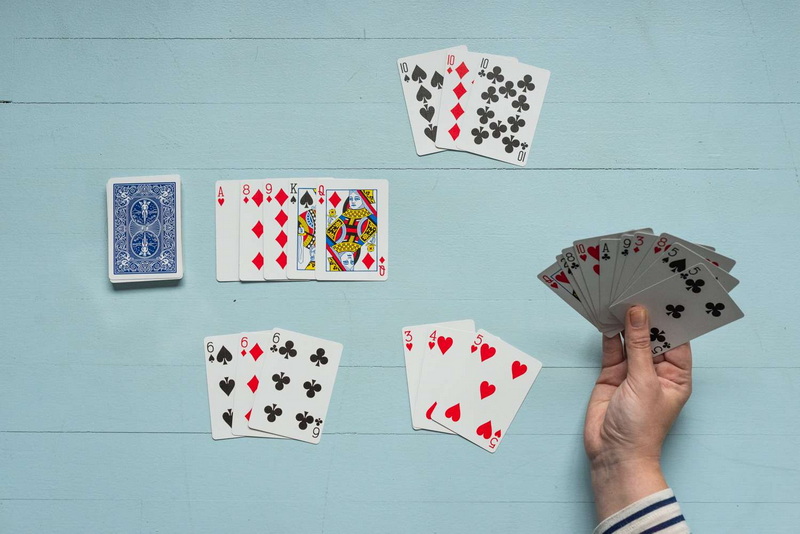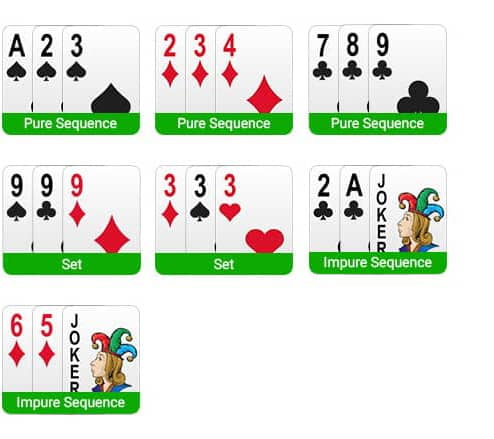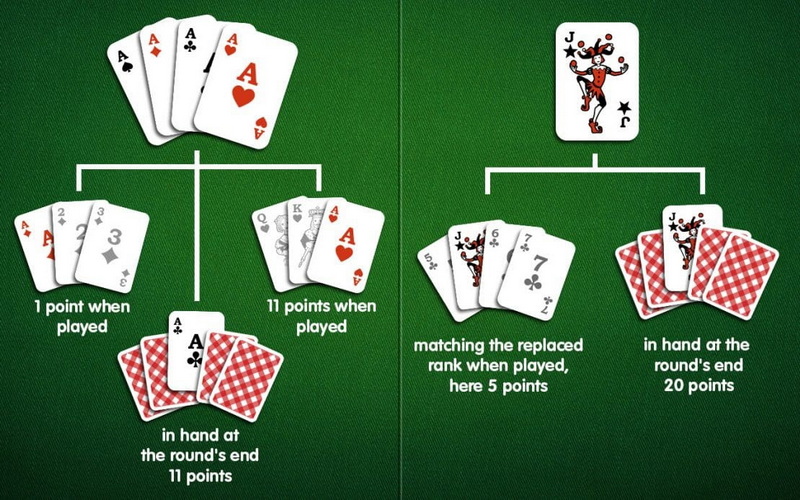Content Menu
● Understanding the Objective of Rummy
● Setting Up the Game
● Basic Rules of Play
● Scoring in Rummy
● Strategies for Winning at Rummy
● Variations of Rummy
● Common Mistakes to Avoid
● Advanced Strategies for Competitive Play
● Playing Online vs In-Person
● Conclusion
● Frequently Asked Questions
>> 1. What is the best way to start playing Rummy?
>> 2. How many decks are used in a typical game of Rummy?
>> 3. Can you play Rummy online?
>> 4. What happens if no one goes out before the stock is depleted?
>> 5. Is there a penalty for invalid declarations in Rummy?
Rummy is a classic card game that combines skill, strategy, and a bit of luck. It is played with two or more players, and the objective is to form valid sets and sequences with the cards in hand. This article will explore the rules, strategies, and variations of Rummy, providing you with a comprehensive guide to mastering this entertaining game.

Understanding the Objective of Rummy
The primary goal in Rummy is to arrange all the cards in your hand into valid combinations before your opponents do. These combinations can be classified into two main types:
- Sets (or Books): Groups of three or four cards of the same rank but different suits (e.g., 7♠, 7♦, 7♣).
- Runs (or Sequences): Three or more consecutive cards of the same suit (e.g., 5♣, 6♣, 7♣).
To win a round of Rummy, a player must successfully meld their cards into these combinations and declare their hand.
Setting Up the Game
Rummy can be played with a standard deck of 52 cards plus one or two jokers, depending on the variation. Here's how to set up the game:
1. Number of Players: Rummy can be played by 2 to 6 players.
2. Dealing Cards:
- For 2 players: Each player receives 10 cards.
- For 3-4 players: Each player receives 7 cards.
- For 5-6 players: Each player receives 6 cards.
3. Creating the Stock and Discard Pile:
- The remaining cards form the stock pile, placed face down.
- The top card from the stock is flipped over to start the discard pile.
Basic Rules of Play
The game proceeds in turns, following these basic rules:
- Drawing Cards: On your turn, you must draw one card from either the stock pile or the discard pile.
- Melding Cards: After drawing, you may lay down valid sets or runs on the table. However, your first meld must consist of at least one pure sequence (a run without a joker) and must total at least 30 points.
- Discarding Cards: At the end of your turn, you must discard one card face up onto the discard pile.
- Ending a Round: A round ends when one player discards their last card. Players then score points based on the remaining unmelded cards in their hands.

Scoring in Rummy
Scoring in Rummy can vary depending on house rules or specific game variations but typically follows this structure:
- Face cards (Kings, Queens, Jacks) are worth 10 points each.
- Aces are worth either 1 point or 11 points depending on their use in sequences.
- Numbered cards are worth their face value (e.g., 2 is worth 2 points).
When a round ends, players calculate their scores based on unmelded cards remaining in their hands. The goal is to minimize your score while maximizing your opponents' scores.
Strategies for Winning at Rummy
To improve your chances of winning at Rummy, consider these strategies:
- Focus on Pure Sequences: Prioritize forming at least one pure sequence early in the game as it is essential for making a valid declaration.
- Observe Opponents: Pay attention to what cards your opponents pick from the discard pile and what they are discarding; this can give you clues about their hands.
- Manage High-Value Cards: Discard high-point cards that do not contribute to your melds early on to minimize potential penalties if you lose.
- Use Jokers Wisely: Jokers can substitute any card but cannot be used in pure sequences. Use them strategically to complete impure sequences or sets.
- Keep Your Hand Organized: Sort your cards by suit and rank to easily identify potential melds as well as what you need to complete them.
Variations of Rummy
Rummy has numerous variations that slightly change its rules and gameplay dynamics. Here are some popular versions:
- Gin Rummy: A two-player version where players aim for higher scores by forming melds while minimizing unmatched cards. The first player to reach a certain number of points wins.
- Indian Rummy: Typically played with two decks and requires players to create at least two sequences (one pure) for a valid declaration. This variation often incorporates more complex strategies due to additional jokers available for play.
- Oklahoma Gin: Similar to Gin Rummy but includes additional rules regarding wild cards based on the first upcard dealt. This adds an extra layer of strategy as players must adjust their gameplay based on this initial card.
- Kalooki Rummy: This version allows for more complex melds and often includes specific rules about how many jokers can be used in a single meld. It typically requires players to have at least one joker in their final hand declaration.

Common Mistakes to Avoid
To enhance your gameplay and avoid pitfalls, be mindful of these common mistakes:
- Holding onto High Cards: Keeping high-value cards can lead to significant penalties if another player declares first; try to meld them quickly or discard them if they don't fit into your strategy.
- Ignoring Opponent Moves: Failing to observe what others are discarding can lead you to miss opportunities for blocking their potential melds.
- Not Utilizing Jokers Early: Holding onto jokers too long can limit your options; use them when they can help you complete important combinations.
- Overcommitting Early: Sometimes players rush into melding without considering future turns; it's crucial to balance immediate gains with long-term strategy.
Advanced Strategies for Competitive Play
For those looking to take their Rummy skills to the next level, consider these advanced strategies:
- Card Counting: Keep track of which cards have been played and which remain in play; this can help you make informed decisions about which cards to keep or discard.
- Bluffing Tactics: Occasionally discarding cards that might mislead opponents into thinking you are pursuing a different meld can create opportunities for you later in the game.
- Flexible Play Style: Adapt your strategy based on how other players are performing; if they seem aggressive, consider playing more conservatively until you find an opening.
Playing Online vs In-Person
With technology advancing rapidly, many players now enjoy Rummy online as much as they do in person. Here are some differences between playing online and in-person:
| Aspect | Online Play | In-Person Play |
| Interaction | Limited; mostly through chat features | Direct interaction with opponents |
| Speed | Often faster due to automated dealing | Slower due to manual dealing |
| Availability | Can play anytime against global players | Requires gathering physical presence |
| Game Variations | Often includes numerous variations | Depends on house rules |
| Learning Curve | Tutorials often available | Learning from experienced players |
Both formats have their advantages and unique experiences; choosing between them often depends on personal preference and availability.
Conclusion
Rummy is an engaging card game that blends strategy with social interaction. By understanding its rules and employing effective strategies, players can improve their skills and enjoy this timeless game even more. Whether playing casually with friends or competitively online, mastering Rummy can provide hours of entertainment. With practice and attention to detail, anyone can become proficient at Rummy while enjoying its rich history and varied gameplay styles.

Frequently Asked Questions
1. What is the best way to start playing Rummy?
To begin playing Rummy effectively, familiarize yourself with its basic rules and practice forming sets and sequences as quickly as possible during gameplay.
2. How many decks are used in a typical game of Rummy?
A standard game of Rummy typically uses one deck of 52 cards plus one or two jokers depending on house rules or specific variations being played.
3. Can you play Rummy online?
Yes, many platforms offer online versions of Rummy where players can compete against others globally while adhering to standard rules or specific variations.
4. What happens if no one goes out before the stock is depleted?
If all players have drawn from the stock pile without going out, the round ends without a winner, and scores are calculated based on unmelded cards remaining in each player's hand.
5. Is there a penalty for invalid declarations in Rummy?
Yes, if a player makes an invalid declaration during their turn, they may incur penalty points based on house rules; typically this involves counting points from unmelded cards left in hand.
































